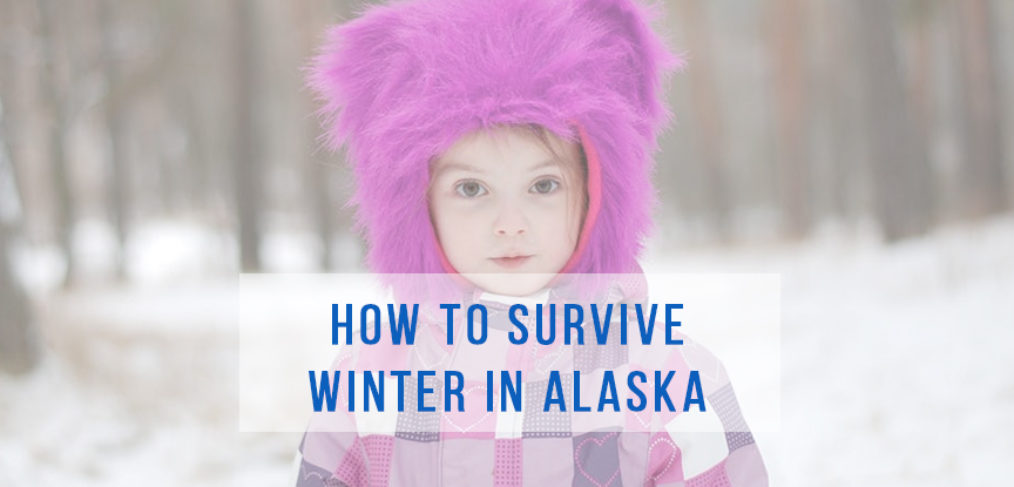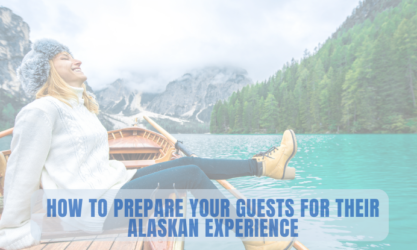
How to Survive Winter in Alaska
Alaskans know cold. After all, here in the Anchorage and Eagle River area, temperatures can drop down as low as minus 60 degrees Fahrenheit for days at a time. But despite the frigid temps, locals know how to survive winter in Alaska. We’ve gathered up a few tips for covering your basics (warmth, food, water, safety and mental well-being), and shared one big misconception at the end that you for sure want to avoid. Here goes:
Tips for How to Survive Winter in Alaska:
Warmth
If you don’t stay warm, you can forget the rest. Staying warm and dry is the name of the game here! Dressing for Alaska winters doesn’t necessarily mean piling it on until you’re waddling across the parking lot and unable to get in your car. Too many clothes will only make you perspire, and once you stop moving around, that moisture will freeze, feeling like you’re wrapped in an icicle. Instead, the secret is to dress in layers, using materials that wick moisture away from the body, rather than soaking it up. Choose fleece or performance fabrics instead of cotton. Warm socks and boots should always be nearby, even if you’re going to a dressy occasion – you never know when you might need to make a quick change. Mittens are better than gloves. And don’t forget a sleeping bag. Yes, a sleeping bag. We know that’s not something you technically “wear,” but standard emergency equipment for traveling in Alaska in the winter often includes a subzero-rated sleeping bag.
Food and Water
You never know when you might be delayed or snowed-in, so it’s important to have food and water supplies at home, work and in your car for emergencies. Have lots of water and protect it from freezing if possible. Non-perishable food supplies are a must. And don’t forget things like can openers and ways to prepare food if needed.
Safety
Since we’re talking about emergency supplies, don’t forget to assemble and store emergency kits along with your food and water supplies. Whether you’re starting from scratch or adding to ones you’ve already prepared, there are a lot of great kits and lists for assembling the right items. Remember to include medicines, baby supplies like formula and diapers, pet food, and extra winter clothing in addition to food, batteries, flashlights, lanterns, radios, infant formula, water, blankets, and first aid supplies. Check the Red Cross website for printable checklists you can use when assembling kits for your car, home and work.
Mental Health
While Seasonal Affective Disorder (SAD) affects people throughout the United States, it’s more prevalent in the northernmost states where winter months are darker, colder, and last longer. Which means Alaska! SAD is directly linked to a lack of daylight, therefore it’s important to get as much sun as you can when there is daylight. Get outside and stay active whenever you are. Participate in activities you enjoy such as hiking, snowshoeing, skiing, or even just building snowmen or snow castles with the kids. And if you’re stuck inside, check out “light therapy” lamps and bulbs to bring some daylight inside to you.
Don’t Try This
One big misconception about a way to warm up? Alcohol. Between movies portraying brandy as the ultimate warmer-upper and Bugs Bunny cartoons with fluffy St. Bernard’s rescuing people in the snow with little barrels of brandy around their neck, no wonder so many people still believe this myth.
A good stiff shot of booze will NOT warm you up fast. It might make you FEEL warmer, which is likely to get you in trouble, because you think you’re warm, but you’re not! Alcohol causes blood vessels near the skin to expand which allows the body to lose heat faster when it should be saving heat. Not good. Even worse, alcohol will affect your reasoning and reactions and when you’re in a potentially dangerous situation, this is not what you want.
If you’re new to Alaska and want to learn more about how to survive winter in Alaska and ways to stay safe and enjoy this beautiful country we live in, please give us a call. We’re here to help!


